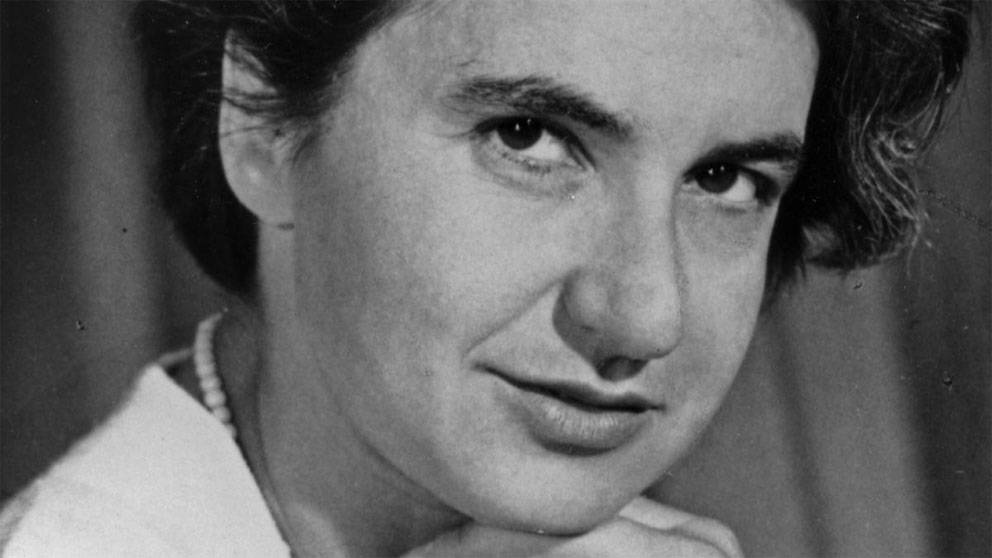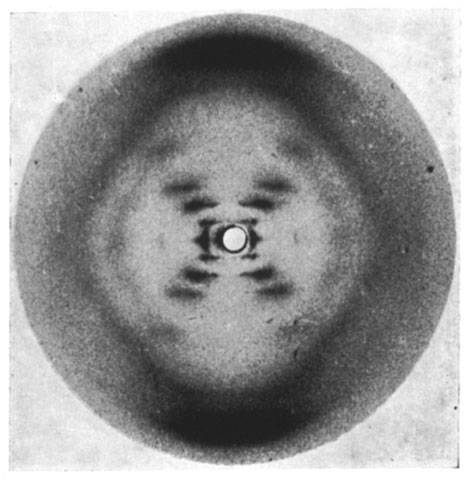Why is it important to have women and minorities in STEM fields?
In science, we are always trying to make research more inclusive rather than exclusive. The involvement of women in the advancement of science cannot be understated. Women comprise slightly more than 50 percent of the population — exclusion means we are losing bright scientific minds with ideas and imaginations that could cure disease, inspire young scientists, and breathe fresh air into a challenging atmosphere that cannot afford to grow stagnant.
How can we attract and retain female and minority scientists? By providing examples of such scientists we reinforce the idea that a career in science is attainable to all backgrounds, regardless of race, sex, or religion. It is much easier to relate to someone with similar personal experiences, and seeing a reflection of oneself in a successful scientist can be a powerful image.
In the JAX blog, we are highlighting the achievements of women geneticists, celebrating not only their contributions to science but also remembering their struggles navigating what was, for many of them, a non-traditional career. We begin with Rosalind Franklin, whose story is famous within the scientific community, but is less well-known among the general public. She is an inspiration to many female scientists, myself included, and I am honored to write about her for the JAX blog.

Rosalind Franklin and the double helix
If you have heard of Rosalind Franklin, you have probably heard it in connection with James Watson and Francis Crick, who won the 1962 Nobel Prize in Physiology and/or Medicine for their discovery of the double-helix structure of DNA. I first read about Rosalind Franklin in The Double Helix, James Watson’s recollection of the events leading to their groundbreaking discovery. I was about 13 at the time, and I became fascinated with Rosalind Franklin: her personality and research, as well as her part in the story of The Double Helix.
But what I didn’t appreciate at the time was the vast amount of work that Rosalind Franklin accomplished in her short time as an independent scientist, or the journey that she had taken to arrive in her position. I’m limited in the amount I can write here, as I could literally write an entire dissertation gushing about Franklin. For more history, I refer readers to Barbara Maddox’s excellent biography Rosalind Franklin: The Dark Lady of DNA, which I relied on heavily for the information presented herein.
Although the Nobel Prize was awarded in the 1960s, Franklin’s story began much earlier, when she arrived at King’s College in 1951.
Franklin was hired because of her expertise in X-ray crystallography, a technique that uses X-ray beams to analyze the 3-D structure of crystallized molecules. In X-ray crystallography, X-ray beams are directed onto highly purified crystalline molecules, and as the light hits the molecules, it reflects and creates a diffraction pattern. This diffraction pattern is collected and developed on X-ray plates, and the patterns reveal the molecular architecture of the interrogated materials. Franklin was among the best X-ray crystallographers of her time, and J.T. Randall wanted her to apply these techniques to the structure of DNA.
In hiring Franklin, Randall made an enormous oversight. Maurice Wilkins, a senior member of the Randall lab, had actually been working on the structure of DNA for several years, and he was very invested in continuing his research. In addition, Randall did not include Wilkins in the discussion of how the DNA work was to be allocated, and as a result, Wilkins and Franklin both had stakes to the ownership of this project.
This communication error underlies what Barbara Maddox has called “one of the great personal quarrels in the history of science.” Wilkins began analysis of Franklin’s data without her knowledge or approval, and she began to feel paranoid that others were trying to control her work. Franklin was known to be somewhat confrontational, and her personality did not interact well with that of Wilkins, who was reticent and sensitive to Franklin’s sometimes-harsh statements. Tensions were high at King’s College, and Wilkins was growing frustrated with Franklin’s hostility to his involvement in the DNA project.
Wilkins began to vent to friends at the Cavendish Laboratory, including Francis Crick and James Watson, who were also working on the structure of DNA. Their approach was distinct from that of Franklin, as they preferred to start building models based on published and/or available data. Franklin considered model building, in the absence of significant data, incredibly imprudent and unprofessional. She was the epitome of an evidence-based scientist and was not satisfied until the techniques and images were perfected.
In November 1951, James Watson saw Rosalind Franklin for the very first time at a small conference on DNA held at King’s College in London. Most of what Watson recollects is Franklin’s appearance, as he describes in The Double Helix: “Momentarily I wondered how she would look if she took off her glasses and did something novel with her hair…” Although later in life, Watson would prove to be a good friend and powerful ally to Franklin, at this point he was guilty of objectifying her and believed he knew more about her data than she could comprehend.

By the spring of 1952, Franklin had perfected her X-ray crystallography technique of DNA. On May 1, she took what famed X-ray crystallographer J.D. Bernal called “among the most beautiful X-ray photographs of any substance ever taken.” Photograph 51, as it is called, shows a sharp image of the X-ray diffraction pattern of pure crystalline DNA, and was the critical piece of evidence for Watson and Crick’s famous model. But how, and when, did they see this picture?
At the end of 1953, Franklin was preparing to leave King’s College. She had finished collecting her data, and was ready to leave the semi-aggressive atmosphere where, quite frankly, very few people respected her. Wilkins was preparing to take over this project, and thus had access to Photograph 51. During a chance meeting, Watson and Wilkins discussed Franklin’s hostile personality, and Wilkins showed Watson Photograph 51.
Watson immediately recognized that image showed DNA had a helical structure, and rushed back the Cavendish to tell Crick that there was real evidence of a helical configuration for DNA. Watson and Crick also had access to a research summary Franklin had written for her grant review board. Basically, Watson and Crick had all of Rosalind’s data and conclusions from her most current research, without her knowledge or consent.
Many have argued that Rosalind Franklin was an excellent crystallographer, but was incapable of interpreting her own data; this is categorically false. In fact, at the same time that Watson and Crick were solving the structure using Franklin’s data, she was coming to nearly the exact same conclusions. She was preparing three manuscripts on her data collected at King’s College, and had also concluded that DNA had a double-helical structure. She came within a few steps of the final model of DNA, and provided all of the necessary data for Watson and Crick to solve it.
In the trio of papers published in Nature on April 25,1953, Franklin’s paper came last, as supporting data. No one ever admitted to her that the duo at the Cavendish had seen her data, although she probably suspected they had. She did not complain. To the contrary, she added to her published manuscript the following statement: “Thus our general ideas are consistent with the model proposed by Crick and Watson.”
Would Rosalind be included with Watson, Crick, and Wilkins, for the Nobel Prize in 1962? We will never know, as Rosalind Franklin passed away from ovarian cancer in April 1958, at the tragically young age of 37.
Rosalind Franklin spent only 27 months at King’s College, but it is the most highly scrutinized and retold portion of her life. Very few people today know of her ground-breaking discoveries on the chemical structures of coal and graphite, or that she led the team that solved the 3D structure of the tomato mosaic virus (TMV). She was fascinated by viruses, and began studies on the poliovirus shortly before her death. Franklin’s publication record alone shows a scientist at the top of her field, with discoveries significant enough to have earned three Nobel Prizes.
Although she never complained, Franklin dealt with her fair share of discrimination and sexism. As a woman, and as a Jew, she often felt isolated from her colleagues, and these were challenges she was never quite able to overcome. As an undergraduate at Cambridge, she was denied the right to a Bachelor’s degree, as women were entitled to the “Degree Titular” at the time; Bachelor’s degrees were only granted to men. She also endured the Second World War while at Cambridge, and witnessed the British government caps on Jewish immigrants from Europe who were trying to escape Hitler’s Third Reich. These restrictions enraged Franklin, and she found little sympathy at Cambridge.
Many articles and biographies point to Franklin’s harsh demeanor, and claim that her hostility was the cause of many of her communication problems. To be fair, she was brutally honest and had very high expectations of those around her, just as she had high expectations for herself. I found the following passage from Barbara Maddox’s biography of Rosalind Franklin particularly enlightening, regarding her personality:
“Confrontation when cornered was Rosalind’s tactic. The alternative — passive acquiescence in something she knew to be wrong — was intolerable, totally contradictory to her faith in the provable truth of science.”
The real tragedy of Rosalind Franklin’s life is not that she was robbed of a Nobel Prize; rather, it is science that was robbed of another 20 to 40 years of Franklin’s research presence. She remains an inspiration to many women scientists, myself included, and her work on the structure of DNA is critical to modern molecular biology and genomics research. Without Rosalind Franklin’s groundbreaking work, it may have taken another decade before the double helix structure of DNA had been fully realized.
 Ellen Elliott, Ph.D., is a postdoctoral fellow at The Jackson Laboratory for Genomic Medicine in Farmington, Conn. Ellen works in the laboratory of Adam Williams, Ph.D., where she is studying the function of long non-coding RNAs in TH2 cells and asthma. Follow Ellen on Twitter at @EllenNichole.
Ellen Elliott, Ph.D., is a postdoctoral fellow at The Jackson Laboratory for Genomic Medicine in Farmington, Conn. Ellen works in the laboratory of Adam Williams, Ph.D., where she is studying the function of long non-coding RNAs in TH2 cells and asthma. Follow Ellen on Twitter at @EllenNichole.